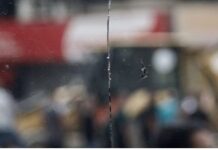Staša Salacanin
The Cradle / September 6, 2024
Israel regularly threatens to ‘bomb Lebanon back to the stone age.’ But in any full-scale war, it is the occupation state’s energy infrastructure that will likely collapse first – a catastrophe for Israelis who have never known blackouts and shortages.
As clashes on Lebanon’s border and the potential for war with Hezbollah intensify, Israel grows more concerned over its vulnerability to energy supply shortages and power grid security. With ceasefire negotiations heading nowhere, many experts and Israeli insiders believe that energy security may end up becoming the occupation state’s Achilles heel.
Lessons learned from Ukraine show just how challenging it remains to protect energy infrastructure during a hot conflict. Despite Israel’s “advanced” air defenses, the occupation state’s energy system remains highly vulnerable to attacks. This was made evident earlier this year when power outages affected areas in Tel Aviv, Petah Tikva, and Beersheba, leaving thousands without electricity.
Concerns were further heightened when Shaul Goldstein, a senior state electricity official, admitted that Israel’s energy sector is unprepared for a major war. He warned that in a war with Hezbollah, Israel’s power infrastructure could suffer severe disruptions.
His blunt statement – “after 72 hours without electricity, it will be impossible to live here” – sparked a wave of public anxiety. Although Energy Minister Eli Cohen and Israel Electric Corporation’s CEO Meir Spiegler criticized Goldstein’s comments, they nonetheless raised alarm among both officials and citizens. As a result, many Israelis have been panic-buying diesel generators in anticipation of future outages.
While both Hezbollah and the Israeli military appear keen to avoid wider direct conflict – as it would almost certainly draw in allies from both sides – tensions remain very high. The situation escalated after Israel’s April attack on the Iranian consulate in Damascus, followed by Iran’s missile and drone retaliation, and then more recently following Israel’s assassinations of top Hezbollah and Hamas officials. Though responses to Israeli aggressions are calculated to minimize damage, the risk of miscalculation looms large, threatening to spark a more destructive war.
Hezbollah’s message to Tel Aviv
In June, Hezbollah released a video, reportedly captured by a drone breaching Israeli airspace, revealing sensitive infrastructure and energy sites in and around the port city of Haifa. Hezbollah’s Secretary-General Hassan Nasrallah warned that the Lebanese resistance would fight “without constraints, rules, or limits” if war were imposed on the country. Speaking to The Cradle, veteran global energy expert Cyril Widdershoven says: ”If a full-scale confrontation starts between Hezbollah/Iran and Israel, for sure, the Israeli energy grid/system will be targeted. How far Hezbollah will be able to hit the system to bring Israel to its knees is unknown. But looking at the yearlong preparations of the Israeli army, airforce, and navy, measures have been taken to counter this or even pre-emptively take out Hezbollah/Iranian capabilities for sure.”
Nevertheless, the war in Ukraine has demonstrated that even the most sophisticated air defenses – whether western or Russian ones – cannot fully shield energy systems from attacks. Long-range drones, in particular, have proven devastating, and Hezbollah is believed to possess a formidable arsenal of precision-guided missiles, drones, and torpedoes capable of striking deep into Israeli territory.
According to a study by the Center for Strategic and International Studies (CSIS), Hezbollah’s stockpile includes between 120,000 and 200,000 short- to intermediate-range missiles and rockets. Israel’s Defense Ministry estimates the country could face up to 5,000 rocket strikes per day in a major conflict.
Despite Tel Aviv’s awareness of these risks, a study published in June by the Institute for National Security Studies (INSS) suggests that “immediate priority would likely be given to “protecting military assets rather than infrastructure such as electricity for civilians.”
Moreover, Hezbollah and its allies in the Axis of Resistance also possess a substantial arsenal of drones, which have been successfully used in Yemen as well as in Ukraine.
Iranian Shahed drones, which Hezbollah uses under the name Ayoub, are inexpensive to produce and, according to Russian sources, cost around $50,000. As Tehran has the largest ballistic missile arsenal in West Asia, any strategic strikes on Israel could be especially devastating. Security expert Akram Kharief believes it could cost Israel around $20–30 billion to defend itself against a major Iranian attack.
Vulnerability of Israel’s energy sector
Besides vulnerable power grid facilities, attacks on three Israeli offshore gas fields – Leviathan, Tamar, and Karish – that supply most of the state’s power plants are expected. The Tamar field has been temporarily shut down over safety concerns, given its proximity to the embattled Gaza Strip. But as Israel–Hezbollah tensions mount, Israel may be forced to shutter all three fields. In such an event, Israel could switch to diesel and coal power, but those reserves are already limited, and supply chains can be easily disrupted in the Mediterranean, as they have already been in the Red Sea.
Many of Israel’s traditional coal and diesel power plants have been phased out to meet environmental standards, further weakening the country’s energy security. The centralized nature of Israel’s power grid has proven problematic, as seen throughout Operation Al-Aqsa Flood, with some areas enduring prolonged blackouts due to slow repairs, with similar problems appearing later in the restive north.
There’s also the potential for oil supply disruptions. During the 2006 Lebanon War, foreign tankers refused to dock at Israeli ports due to insurance concerns, and a similar situation could arise if Hezbollah targets Israeli infrastructure again. Additionally, Israel’s oil imports, mainly from Azerbaijan through Turkish pipelines, could be jeopardized in the event that Turkiye’s political stance shifts.
Widdershoven warns, however, that if all of the above happens, an all-out war would be all but guaranteed: “A lack of Israeli gas production will hit Egypt, too, and Jordan. Expect some Egyptian–Jordanian military actions too, not against Israel, but against Hezbollah–Iran–Hamas. Without Israeli gas, the lights are out in Cairo and Amman, too.”
Blackouts amid civil unrest
Indeed, almost three-quarters of Israeli gas production at Leviathan is sent via pipeline to Egypt and the rest to Jordan, with almost 70 percent of Jordanian consumption supplied by Israel.
In a worst-case scenario, analysts warn that the short-term outlook for Israel’s energy sector, particularly its electricity supply, is bleak. Strengthening the grid’s security would take several years and require costly infrastructure investments.
This raises concerns about the impact on Israel’s wider population, which, unlike the Palestinians, are unaccustomed to blackouts and energy shortages. This isn’t even taking into account the domestic political turmoil currently enveloping the occupation state, as Israel’s most extremist government fails to reach a ceasefire agreement with Hamas.
While such disruptions would undoubtedly affect morale, Widdershoven argues that widespread demoralization among Israelis during a war is unlikely. Instead, he believes that attacks from Hezbollah, Iran, or Hamas would harden public support for their defeat, with many Israelis already backing the war in Gaza. But neither time nor the ability to repair damaged infrastructure is on Israel’s side, and any delay in addressing its broad infrastructural vulnerabilities will prove costly.
Staša Salacanin – author and analyst focusing on West Asia and Europe












